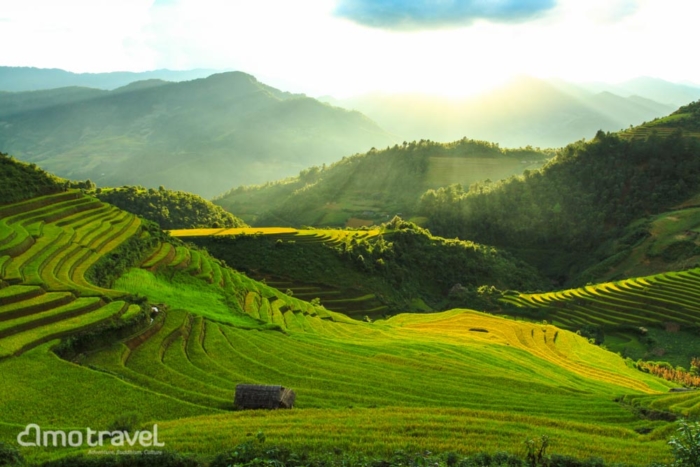Sapa is a beautiful, mountainous town in northern Vietnam along the border with China.
Located at 1500 meters (4921 feet) above sea level in Vietnam’s remote northwest mountains, Sapa is famous for both its fine, rugged scenery and also its rich cultural diversity. Sapa is an incredibly picturesque town that lies in the Hoang Lien Son mountain range near the Chinese border in northwestern Vietnam, known as “the Tonkinese Alps”. Sapa and its surrounding region is host to many hill tribes, as well as rice terraces, lush vegetation, and Fansipan, the highest peak in Vietnam. Other great mountains like Aurora & J, where Sa Pa sees the first rays of sun, make up a very steep valley. However, as a result of a recent surge in popularity Sapa has rapidly become a tourist hotspot where money is the new drug of choice. Don’t be put off by the rush, your explorations of the surrounding countryside will be worth the trouble. Be mindful of all the locals selling in the streets as they can be quite demanding. Groups of locals can be known to follow visitors around, aggressively selling handmade goods. The local government does not encourage tourists to buy from street sellers or give money to children, however it has become customary to hand out toothbrushes to the children.

Ethnic minorities
Many ethnic minorities live in and around Sapa. Excluding the Kinh people or ethnic Vietnamese, eight different ethnic minority groups are found in Sapa. They include H’mong (pronounced Mong), Dao (pronounced Yao), Tay, Giay (pronounced Zai), Muong, Thai, Hoa (ethnic Chinese) and Xa Pho (a denomination of the Phu La minority group). However, the last four groups comprise less than 500 people in total. The population of the district is estimated at 31,652 (1993) of which 52% are H’mong, 25% are Dao, 15% are Kinh, 5% are Tay and 2% are Giay. Around 3,300 people live in Sapa town, and the remainder are peasant farmers distributed unevenly throughout the district.
Many older women make items such as ethnic clothes and blankets to sell to tourists. Striking up a conversation with them can be very rewarding and their spoken English is impressive. Sadly, doing this in Sapa town will sometimes lead to a scrum as other vendors taste a potential sale.
Children from these ethnic minorities often begin to support their families financially through selling trinkets to tourists. Do not encourage this by buying from children – buy from adults. They peddle small metal or silver trinkets, embroidered pillow cases and friendship bands in the main town, and often walk for several hours from their surrounding villages to reach the town. At the end of the day, some take a motorbike ride back to their village, some walk home and some sleep in the market.
Children have poor or non-existent dental hygiene. As the signs around town say, do not give them candy or sweets – it will cause dental issues. If you want to give them something, safe toys from your home are highly regarded.
There are schools in Sapa’s villages. Most of them lack essential learning tools like books, pens or pencils. Give those to the teachers if you’d like.
Girls and boys get married young (around 15-18) and often have two children by the time they are 20 years old. Poverty has led to a great number of girls leaving their villages each day to go sell trinkets in Sapa town.
Weather
The billboard in Sapa states proudly of its weather: “Four seasons in one day.” Chilly winter in the early morning, spring time after sunrise, summer in afternoon and cold winter at night.
In winter (the 4 months between November and February), the weather in Sapa is invariably cold, wet and foggy (temperatures can drop to freezing and there was snow in 2011). Travelers have rolled into town on a glorious clear day and proceed to spend a week trapped in impenetrable fog. When it is like this there really isn’t very much to do. Also, the rice paddys are brown & empty (they are planted in spring), the paths very muddy & slippery & the glorious vistas of summer are completely hidden in the mist. If you choose to visit in winter, bring along warm clothing or prepare to be cold and miserable, as many hotels do not have efficient heating in their rooms. During that time, the more upscale hotels that do have heating fill up quickly, so make reservations in advance if you can afford not to freeze. (Or don’t go there in winter time).
It rains very often during the month of August, especially in the mornings – though this is also the time when scenery is at its greenest and most beautiful.